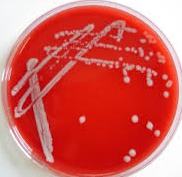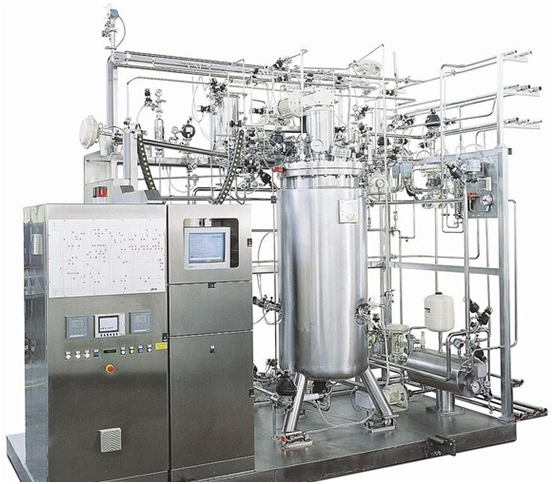Microorganisms including bacteria, fungi, actinomycetes and viruses possess some unique qualities different from animals and plants. And these special characteristics of microbe’s warrants there continued usage for most of the industrial and/or biotechnological processes that produce goods and services that are of huge economic importance. Microorganisms require cheap nutrients for growth and they grow and multiply rapidly unlike plants and animals that take time to grow and multiply.
The microorganisms used for industrial productions are usually categorized as GRAS (Generally Regarded As Safe); and this is because some of these microbes are naturally non-pathogenic and their end-product are usually free from toxic substances. Microorganisms are highly versatile and diversified organisms with many positive traits that are responsible for their usage in many industrial and biotechnological applications.
These characteristic are elucidated in this section. Microorganisms required for the large-scale production of economically important products including but not limited to foods, pharmaceuticals, wine, beer and fuels must meet some certain criteria to warrant their usage in biotechnological/industrial microbiology processes. Some of these criteria are as follows:
Ability to grow in simple growth medium
Microorganisms used in industrial microbiology must be able to grow in simple growth medium. This will help to maximize profit and cut the cost of adding additional growth nutrients to the medium. The microorganisms must be able to metabolize the nutrients available in the growth medium for its optimal growth and must not require additional growth factors such as amino acids and pre-formed vitamins outside those already made available in its growth medium. If the organism requires additional growth nutrient for growth outside those provided in the medium it is growing in, it will increase the cost of production and hence the cost of the finished product in the market. Thus it is vital that the microbes utilize simple growth medium in order to cut down on unnecessary cost of adding additional growth nutrients to the growth medium.
Production of non-toxic end products
The end product of the microorganisms must not be toxic. Microbial products meant for human consumption should not be toxic to the body or have undesirable qualities that may affect the health status of the consumers. Since most microbial products are intended for internal use, it is vital that microorganisms used for industrial processes do not produce toxic or undesirable products that generally affect the health of the end users.
Ability to grow fast
The microorganism should be fast-growing. Microorganisms meant for industrial microbiology processes should be able to grow vigorously and rapidly in the growth medium. The organism should not be slow-growing in nature because slow-growing microbes could impact on the cost of production no matter how efficient the organism may be in terms of production. Slow-growing microbes are susceptible to possible contamination during the fermentation processes, and the time it will take a slow-growing organism to produce its desired end product will be more compared to fast growing organisms. Slow-growing microbes increase the cost of production and causes possible contamination of the production process.
Ability to produce the desired end product
The microorganisms must be able to produce the desired end products at the end of the fermentation process. The microorganisms used for industrial processes should be able to produce its desired end product under a short period of time in order to avoid contamination. This also helps to maximize profit.
Amenability to genetic manipulations
The microorganisms should be amenable to genetic manipulations. Genetic manipulation techniques are used to produce microorganisms with new and desirable qualities; and this is usually achieved by introducing a beneficial mutation that alters the genetic makeup of the organism for industrial importance. The genetic makeup of microorganisms for industrial production should be easily manipulated in order to produce or get improved strains of the same organism with better qualities. This will ensure continued production of the desired end product with improved properties and higher product yield.
Ability to be resistant to microbial killers
The microorganisms should be resistant to microbial killers such as bacteriophages and other biotic or abiotic materials/substance that may affect its growth. Microorganisms meant for industrial production should not be susceptible to predators such as bacteriophages – which will reduce their productivity
Ability to be genetically and physiologically stable
The microorganisms should be genetically and physiologically stable. Microorganisms meant for industrial production processes should not mutate easily. Undesired mutations in industrial microorganisms will lead to the production of undesired end products. And this will affect product yield and thus wastage of raw materials used for production.
Easy harvest of end products
The end products of the microorganisms should be easily harvested at the end of the fermentation process. Microorganisms meant for industrial production should be able to lend itself to a suitable and sustainable method of product recovery.
Ability to utilize less amount of oxygen
The microorganisms should have less demand for oxygen or aerobic environments during the fermentation processes. Increase in the demand for oxygen increases the cost of production. The organisms should not be too demanding for oxygen since aeration in the fermenter/fermenter (for the supply of air or oxygen) contributes significantly to the cost of production and that of the end product as well. Microorganisms of industrial importance include organisms found in the group’s bacteria, fungi (yeasts and moulds), actinomycetes and viruses (Table 1).
Table 1. Some microorganisms of industrial importance and their products
| Microbial genera/species | Products/usage |
| Penicillium, Streptomyces, Bacillus | Antibiotics |
| Recombinant E. coli, S. cerevisiae Claviceps purpura | Insulin |
| Alkaloids | |
| Rhizopus, Arthrobacter | Steroids |
| S. cerevisiae | Ethanol |
| Clostridium acetobutylicum | Acetone & Butanol |
| Mucor, Aspergillus, Bacillus | Enzymes |
| Corynebacterium glutanicum | Amino acids |
| Aspergillus niger | Organic acids |
| Corynebacterium glutanicum | Nucleotides |
| Methanobacterium | Methane |
| Zymomonas, Thermoanaerobacteria | Ethane |
| Photosynthetic microbes | Hydrogen |
| Lactobacillus bulgaricus | Yoghurt production |
References
Bader F.G (1992). Evolution in fermentation facility design from antibiotics to recombinant proteins in Harnessing Biotechnology for the 21st century (eds. Ladisch, M.R. and Bose, A.) American Chemical Society, Washington DC. Pp. 228–231.
Nduka Okafor (2007). Modern industrial microbiology and biotechnology. First edition. Science Publishers, New Hampshire, USA.
Das H.K (2008). Textbook of Biotechnology. Third edition. Wiley-India ltd., New Delhi, India.
Latha C.D.S and Rao D.B (2007). Microbial Biotechnology. First edition. Discovery Publishing House (DPH), Darya Ganj, New Delhi, India.
Nester E.W, Anderson D.G, Roberts C.E and Nester M.T (2009). Microbiology: A Human Perspective. Sixth edition. McGraw-Hill Companies, Inc, New York, USA.
Steele D.B and Stowers M.D (1991). Techniques for the Selection of Industrially Important Microorganisms. Annual Review of Microbiology, 45:89-106.
Pelczar M.J Jr, Chan E.C.S, Krieg N.R (1993). Microbiology: Concepts and Applications. McGraw-Hill, USA.
Prescott L.M., Harley J.P and Klein D.A (2005). Microbiology. 6th ed. McGraw Hill Publishers, USA.
Steele D.B and Stowers M.D (1991). Techniques for the Selection of Industrially Important Microorganisms. Annual Review of Microbiology, 45:89-106.
Summers W.C (2000). History of microbiology. In Encyclopedia of microbiology, vol. 2, J. Lederberg, editor, 677–97. San Diego: Academic Press.
Talaro, Kathleen P (2005). Foundations in Microbiology. 5th edition. McGraw-Hill Companies Inc., New York, USA.
Thakur I.S (2010). Industrial Biotechnology: Problems and Remedies. First edition. I.K. International Pvt. Ltd. New Delhi, India.
Discover more from #1 Microbiology Resource Hub
Subscribe to get the latest posts to your email.



